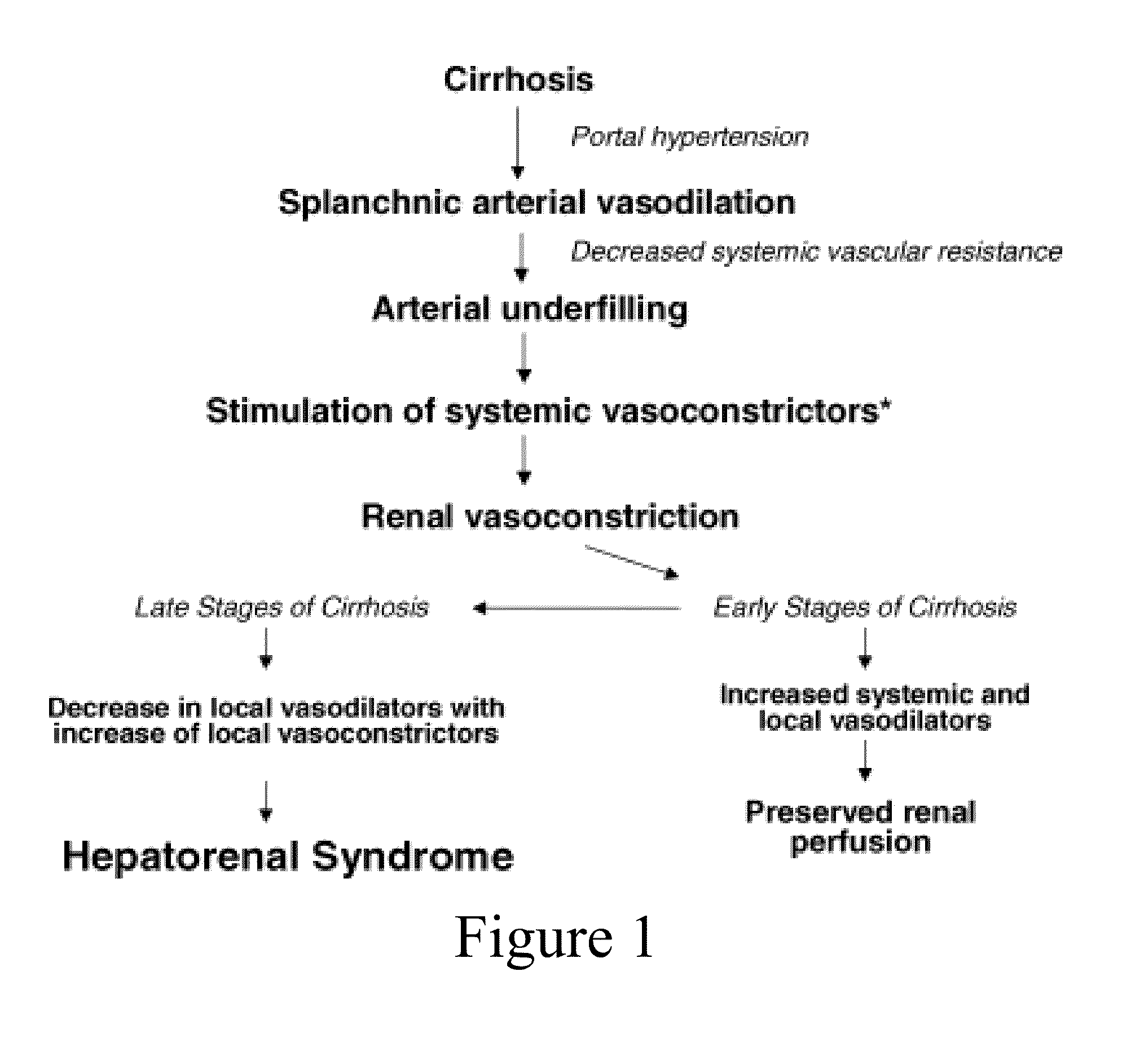Use of angiogenesis antagonists in conditions of abnormal venous proliferation
an angiogenesis antagonist and venous proliferation technology, applied in the direction of immunoglobulins against animals/humans, biocide, drug compositions, etc., can solve the problems of gastrointestinal hemorrhage, impede the surgeon's ability to operate safely in this patient population, and lose vitality, productivity, death, etc., to reduce the complications of end-stage liver diseas
- Summary
- Abstract
- Description
- Claims
- Application Information
AI Technical Summary
Problems solved by technology
Method used
Image
Examples
example 1
1. Example 1
[0467]Two groups of rats can be used to demonstrate the effects of bevacizumab on the formation of portal-systemic collaterals in a rat model of cirrhosis. Rats can first be injected with Matrigel™ collagen matrix (BD Biosciences, San Jose, Calif.). Cirrhosis can then be induced in each of the two groups of rats by administering CCl4 to the rats. An I.P. sham injection can be administered to the control rats and bevacizumab can be administered ip to the non-control rat group. Necropsy and quantification of variceal formation can then be assessed in each of the two groups.
example 2
2. Example 2
[0468]A patient with advanced liver disease who has demonstrated continued and ongoing progression of end stage liver disease or patients early in their disease course who have begun to develop end-organ complications as a consequence of increased venous capacitance can also be assessed.
[0469]Candidates for therapy according to this example include patients with a MELD score>15. Other criteria can include patients with decompensated liver disease or evidence of heptorenal syndrome (either Type I or Type II,), patients being considered for primary prophylaxis agains variceal bleeding, patients being considered for prevention of recurrent variceal hemorrhage, patients in whom a reduction in portal pressures is a desired outcome, and patients with refractory ascites and abnormalities in sodium handling. For these puposes, Type I HRS would be defined as rapid and progressive impairment of renal function, doubling of the initial serum creatinine to a level greater than 2.5 mg...
example 3
3. Example 3
[0501]A patient with symptomatic early hemorrhoidal disease who has failed conservative medical management. Candidates for therapy according to this example are those who suffer from symptomatic 2nd degree haemorrhoids (according to Goligher's classification), and who had undergone six months unsuccessful medical treatment which included diet, fibre and topical agents. Written informed consent was obtained from all patients. The patients of the first group would undergo standard therapy with sclerotherapy and rubber band ligation (SCL / RBL), alone or in combination, and the patients of the 2nd group would undergo injection of the anti-angiogenic agent directly into the varix. For bevacizumab, a dose 1 / 10 that of the systemic dose, or other concentration, could be used in a volume of approximately 2-6 mL. A surgeon who was very experienced in the field of coloproctology would perform all the procedures.
[0502]All the patients were asked about their medical history and were ...
PUM
 Login to View More
Login to View More Abstract
Description
Claims
Application Information
 Login to View More
Login to View More - R&D
- Intellectual Property
- Life Sciences
- Materials
- Tech Scout
- Unparalleled Data Quality
- Higher Quality Content
- 60% Fewer Hallucinations
Browse by: Latest US Patents, China's latest patents, Technical Efficacy Thesaurus, Application Domain, Technology Topic, Popular Technical Reports.
© 2025 PatSnap. All rights reserved.Legal|Privacy policy|Modern Slavery Act Transparency Statement|Sitemap|About US| Contact US: help@patsnap.com



